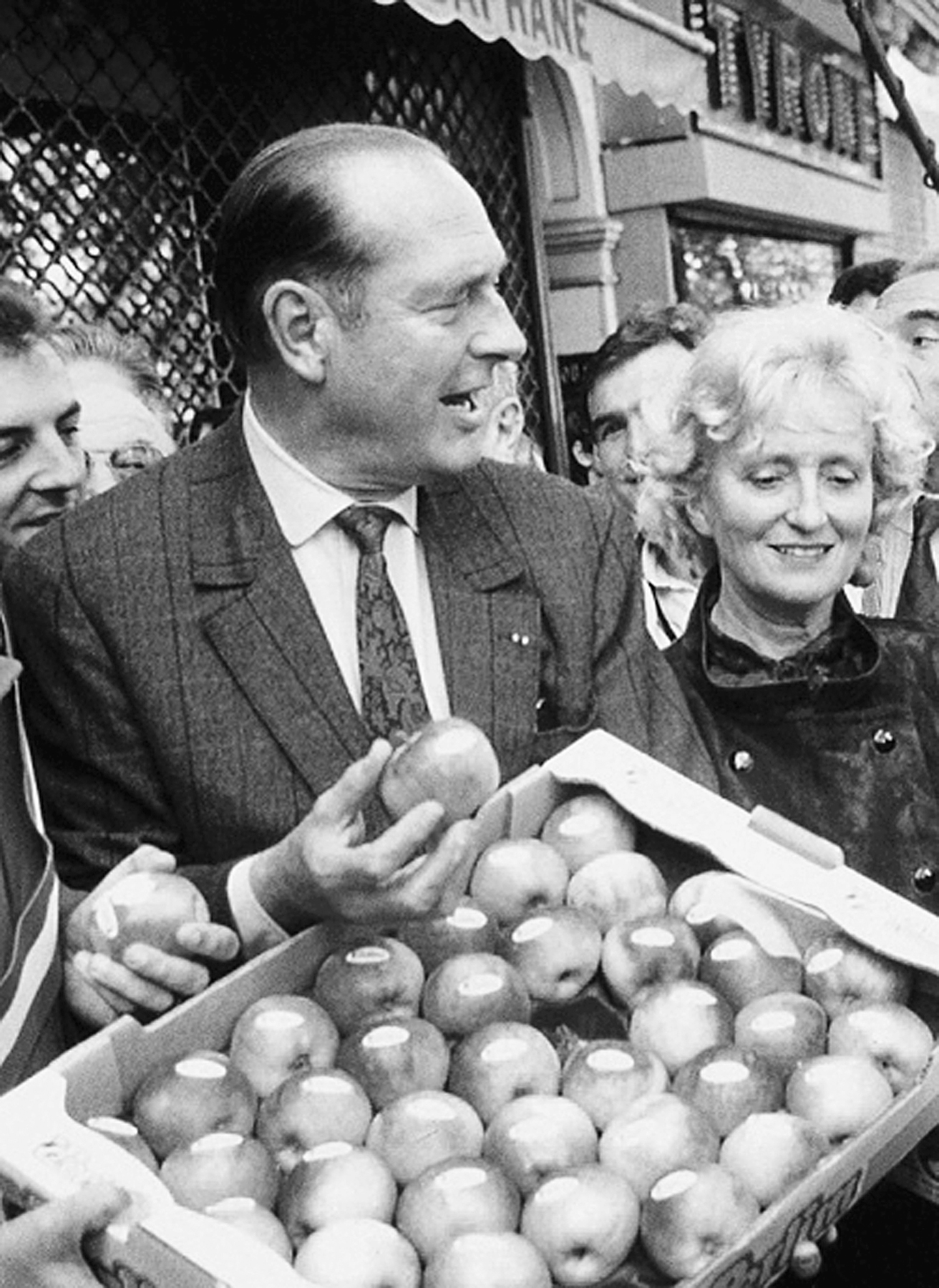42
Cabris, Alpes-Maritimes. October 2014. 9 p.m. 18°C. A plaza paved in fieldstone ends abruptly at a cliff that plunges hundreds of meters to the verdant coastal strip, a patchwork of orchards and vineyards, veiled in woodsmoke as farmers burn off the debris of the harvest. Beyond, the Mediterranean is a seductive cerulean blue, deep enough to die in. In July 1944, Antoine de Saint-Exupéry plunged his P-38 Lightning into its embrace, his death, like his life, the embodiment of a belief that “perfection is achieved not when there is nothing more to add, but when there is nothing left to take away.”
FRANÇOIS MITTERRAND WASN’T THE ONLY POLITICIAN TO LINK HIS career to the abundance of France’s fields and orchards.
A contrast to the sly, suave, devious Mitterrand, the burly six-foot-two-inch-tall Jacques Chirac, president from 1995 to 2007 following terms as prime minister and as mayor of Paris, was known as “the Bulldozer.” The name was conferred by his former boss, President Georges Pompidou, in recognition of his ability to get things done, never mind whom he crushed in the process.
In a distant echo of the Calendrier républicain, both Mitterrand and Chirac chose a fruit or flower as emblem of their time in office. It says something about their fundamental difference in style that Mitterrand selected the patrician rose, whereas Chirac opted for the more egalitarian apple.
Chirac’s enthusiasm for apples became public while he was still mayor of Paris. After he mentioned they were his favorite fruit, a journalist confronted him with some samples of different types and asked if he could identify them. A variation on the old trick of discrediting a self-styled Man of the People by asking him the price of a liter of milk, the device was too crude for the savvy Chirac, who blasted the man by affirming his relish for all apples, irrespective of variety, providing only that they were French.
Of these there was no shortage. In defiance of the EU’s attempt to position the bland Golden Delicious as a one-size-fits-all “Euro-apple,” French growers produced scores of varieties, from the hard, green Granny Smith to the wan and spotty Clochard, the yellow Chanticleer to the superjuicy Pink Lady, the red-brown Reinette to the tart Cox’s Orange Pippin, and dozens in between. Each excelled in its own way. Clochards, despite their unprepossessing appearance, were ideal for baking with meat. Norman farmers favored bittersweet apples like the Binet Rouge for making cider. Against such competition, the Golden Delicious scored poorly. It appealed mostly to shippers, since the vaguely hexagonal shape made it easier to pack.

Jacques Chirac and apples, 1991.
Anonymous. Jacques Chirac and Apples. Service photo, Mairie de Paris.
Chirac’s enthusiasm for apples played so well that he made it the motif of his political career. In 1991, he replaced his mayoral chain of office with an improvised necklace of apples to greet a deputation of farmers. When he ran for president in 1995, his campaign logo was a green tree with bright red apples. This delighted journalists, who described him as “sitting pretty beneath his apple tree,” “tending his orchard,” and “harvesting the fruit of his labors.” When the former president and onetime critic made conciliatory noises about Chirac, someone commented, “Giscard is eating apples.”
Food became a theme of the election. A restaurant patronized by both Chirac and his opponent, Édouard Balladur, listed the favorite meals of both and invited other clients to participate in an informal poll by ordering one of the two dishes. Many more preferred Chirac’s hearty country sausage than Balladur’s prissy herrings in oil, a result reflected in Chirac’s landslide victory.
In Shakespeare’s Macbeth, a man is praised for having confessed his sins before being hanged. “Nothing in his life became him like the leaving it,” says the man who officiated at his execution. The line can sound respectful but works better if played with black humor, like Greta Garbo’s comment as the commissar in the film Ninotchka that “the last mass trials have been a great success. There are going to be fewer but better Russians.”
Nothing became Mitterrand’s life like the leaving it. In his fourteen years as president, he gained a reputation as someone who liked to eat. His private chef, Danièle Mazet-Delpeuch, the first woman to cook for a serving president, revealed that when he visited the kitchen at night in search of a snack, she made him the most luxurious of nibbles: toasted Poilâne wholemeal sourdough bread topped with thick slices of Périgord truffle at $3,000 a kilo.
When he could no longer disguise the progress of his final illness, the president chose to go out eating. On New Year’s Eve 1995 he invited thirty friends to his holiday home at Latche, in the southwestern region of Landes, part of ancient Gascony, for a dinner of oysters; foie gras; capons, those fattest of all chickens; and, as a starter, ortolans.
A famous delicacy, these tiny birds, no bigger than a man’s thumb, are trapped in mist nets, drowned in Armagnac, roasted in individual closed ceramic pots, and then eaten whole—bones, beak, and all. As each pot is opened, the diner drapes a napkin over his head—to conserve the aroma, but also, it’s said, to hide his sinful act from God.
“Bien sûr, m’sieur le Président,” said his chef after Mitterrand made his request. “However, I would be remiss in my duty if I did not point out that the ortolan is a protected species.”
“I am president of the Republic,” Mitterrand said wearily, “and have only a few weeks to live. What can they do to me?”
Accordingly, each diner, including the president, was served two ortolans. Eight days later he was dead, having ended his life as he lived it: on a full stomach.